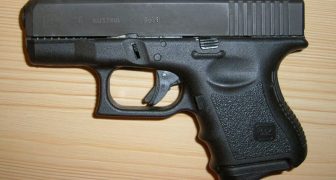This is a guest post by Andrew Betts
If you are a firearm enthusiast and you haven’t heard of .300 AAC Blackout, I’d bet a six pack that you wear clothes made from animals you trapped and haven’t taken the mule down the hill to town in a couple years. The .30 caliber cartridge based on the 5.56mm case has seen explosive popularity in the last few years. Its popularity is largely due to the ease of conversion from a .223 Rem or 5.56mm chambered AR-15 pattern rifle.
A smart guy once said that .300 AAC is the most convenient way to shoot 7.62x39mm from your AR. While the two cartridges are not identical, they are quite similar and produce similar ballistics. The steep taper on the 7.62x39mm makes it difficult to feed reliably in a standard AR lower, though. It requires special magazines that curve sharply, then straighten where they enter the receiver and it requires a special, weaker bolt. The only thing necessary to convert a .223 or 5.56mm rifle to .300 AAC is a barrel. All other parts, including the bolt are identical. That means that a person can either convert an existing rifle or build a new rifle or upper from standard parts, which keeps cost reasonable and allows maximum customization. Of course, complete upper halves are also available, which most shooters will likely prefer over changing the barrel.
But why would a person want to use an AR pattern rifle for home defense? We covered in depth in earlier articles why ARs are particularly well suited for defense, but to sum up: ARs are a combat proven platform with outstanding reliability and superior ergonomics and intermediate rifle cartridges such as 5.56mm or .300 AAC offer far better terminal performance than handgun cartridges while stocked long guns point much more naturally. It doesn’t hurt that they hold several times as many rounds as most handguns or shotguns and that they can penetrate soft armor or that light carbines are faster and easier to operate than most shotguns with less recoil. In short, AR-15 type rifles are perfect for home defense for exactly the same reasons they are favored by police entry teams and for patrol carbines.Okay, so an AR is a solid home defense choice, but why choose one in .300 AAC Blackout? What does the .300 AAC do better than .223 Rem or 5.56mm? The primary advantage is short barrel performance.
A compact weapon is important for home defense and the .300 AAC offers three distinct advantages in that regard. The first is that, when all other factors are equal, larger bore diameters tend to lose a smaller portion of their velocity as barrel length decreases than smaller bore diameters. The second factor is that the heavier bullets used by the .300 AAC are less sensitive to velocity to achieve adequate performance. The third is that .300 has greater energy than .223 Rem or 5.56x45mm. That means that, all things considered, a rifle chambered in .300 AAC can be more effective with a shorter barrel than one chambered in .223 Rem or 5.56mm. A .300 AAC rifle with a barrel as short as 8” can be an extremely effective home defense weapon, with the right ammunition.
Now, to be fair, there are some things that .300 AAC does not do particularly well, but those weaknesses are not relevant to home defense. For example, one of the main reasons the cartridge was developed was to be able to cycle subsonic ammunition with the same gas system setting. That may be useful if you are a door kicking ninja, but most of the subsonic ammunition available will not expand and none will expand when fired through heavy clothing.
That makes subsonic .300 AAC about as effective as 9mm FMJ. Obviously, subsonic .300 AAC is fairly pointless but you are not limited to subsonic ammunition. Full power soft point or open tip ammunition should be used for defensive purposes and that brings us to another reason that .300 AAC is an excellent choice for defense. Because the projectile is 0.308” any bullet that was designed for .308 Win, 7.62x51mm NATO, or .30-06 can be loaded into a .300 AAC case. That means there is a staggering array of available bullets already on the market and many are designed with lower velocity performance in mind.
There are also criticisms about the long range practical accuracy because the relatively low velocity and curved trajectory means shooters need to know their hold over/under well. Again, this is not particularly relevant to defense. In terms of home defense or even for civilian use in periods of civil disorder, an AR chambered in .300 AAC does everything that a .223 Rem or 5.56mm rifle can do at least as well and it does some things a little better.
As always, the best home defense weapon for you is the one with which you are most proficient. It is best to develop proficiency in a weapon system that is technically the best tool available. That said, any time someone makes categorical statements about “the best” you can be assured they are being hyperbolic or are uninformed. A .300 AAC carbine loaded with supersonic ammunition is a very capable defensive weapon, but so is a carbine chambered in any other intermediate cartridge and, to a lesser extent, other firearms are also useful for defense. Train hard and use the tools available to you.
Andrew Betts served with the Arizona National Guard for over 12 years, including a tour to Afghanistan. Visit his YouTube Channel for more great shooting information.
Big thanks to Ed Avila of http://ar15.com for providing the upper and ammunition used in these tests. Both are available for purchase here: https://store.ar15.com/
Photo Credit – Zgauthier on Wikipedia


Speak Your Mind